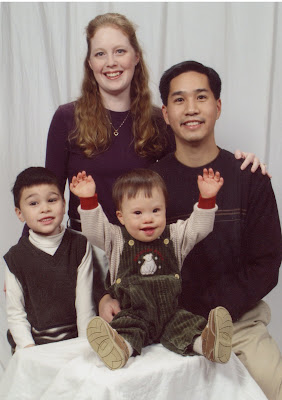The book The Travels of a T-Shirt in the Global Economy came out a few years ago but I just now have gotten around to reading it. If you liked books like Fast Food Nation or Nickel and Dimed, you'll appreciate the narrative approach in this book. Author Pietra Rivoli takes readers on a whirlwind tour of the life cycle of a T-shirt, from cotton farms in Texas to factories in China as well as lobbyists and interest groups arguing in the halls of Congress and how shirts are reused after being donated to Salvation Army bins. It's a fascinating read, and it heightens the complexity of economics and consumer choices in a globalized world.
The author gives an unvarnished portrait of worker conditions in factory sweatshops, but also provides historical perspective and shows how things are actually much better today than they have been in many comparable eras of history. She also argues that the main problems in international trade are not with the markets, but with the politics that govern them.
Lots of fascinating tidbits. From the cotton farming side: It takes about a third of a pound of cotton to make a T-shirt, about fifteen cents' worth. Did you know that cottonseed oil is used in peanut butter, spaghetti sauce, Girl Scout cookies and almost any kind of crispy snack food, like chips? It's also used in soaps and detergents. The meal from cottonseeds is used to feed horses, hogs, chickens, sheep and catfish. And leftover cotton fuzz is sold to be used in throw pillows, candlewicks, twine, medical supplies and tree-free toilet paper. Nothing goes to waste.
At the Chinese factories: Yes, it's low pay, long hours, poor working conditions, cramped living quarters, etc. But it's steady pay and far better than rural life on the farm, which is usually more backbreaking and has little financial return or security. Rivoli notes that generations of activists have "changed the rules of the race and raised the bottom, making it a much better place than it used to be." Young women now have more financial options and are less likely to be trapped in poverty or prostitution.
When Americans clean out their closets and donate old clothes to charity (to make room for an endless stream of new clothes), most of the clothes are bundled off and sold to exporters, who cull through them for items that can be sold to particular markets. A vintage Rolling Stones T-shirt can go for $300 in the collector's market. Mickey Mouse T-shirts and Levis jeans are sold to Japanese markets. The clothes are further divided. Some can be resold in bulk, usually to Africa, in huge bales containing several thousand articles of clothing. These eventually find their way to local entrepreneurs in village marketplaces, where a newish Gap shirt might go for $3.00, but shirts from family reunions and fun runs go two for a penny. Other shirts are cut and made into rags, or shredded into "shoddy," which can become raw material for carpet pads, mattresses, insulation and low-grade yarn that can be remade into cheap clothing. Again, nothing is wasted.
The sheer size of the textile industry is staggering, especially the amount of clothing that is purchased and discarded every year. Rivoli notes that American women buy far more new clothes than men and also throw away more clothes as well - bales arriving from the Salvation Army contain two or three times as much women's clothing as men's. Men not only buy less clothing but wear it longer, so the men's clothes that are donated are usually in more ragtag shape than women's clothing. So Western purchases provide the overseas resale market with about seven times more women's clothing in good condition than men's.
Reading this book made me think through my own closets. I rarely buy new clothes, and I tend to only buy to replace something that has worn out. I rotate through maybe five or six dress shirts and three main pairs of Dockers or slacks, and I own three pairs of shoes - brown shoes for the office, black shoes for special occasions and white Reeboks for everything else. In terms of T-shirts, I only buy shirts to commemorate particular events (Urbana or the 2008 Beijing Olympics, for example), and I often find myself getting new shirts for free from trade shows or whatever. I'm pretty ambivalent about my clothing, mostly because these days I don't care a whole lot about fashion or what I look like, as long as things are clean and functional. Even though my default setting is to purchase as little as possible, it's worth remembering that every purchase does at least benefit some worker in some factory (and various middlemen along the way), and discarded, donated clothing also benefits not only some local charity but probably some entrepreneurial merchant in some village overseas. Such is the interconnected nature of global commerce, for good and for bad.
Subscribe to:
Post Comments (Atom)

2 comments:
I like being a writer. Sitting here, wearing t-shirts that are sometimes circa college (well, take my word for it... that's a LONG time ago).
This was such an interesting book, it is great you are encouraging others to check it out.
It was interesting that she didn't mention some of the companies (patagonia rings a bell) that are getting into the processing and reusing their old materials. I hope if this book is updated in 2010 there are more examples of companies designing their products for recycling into new high value garments.
Post a Comment